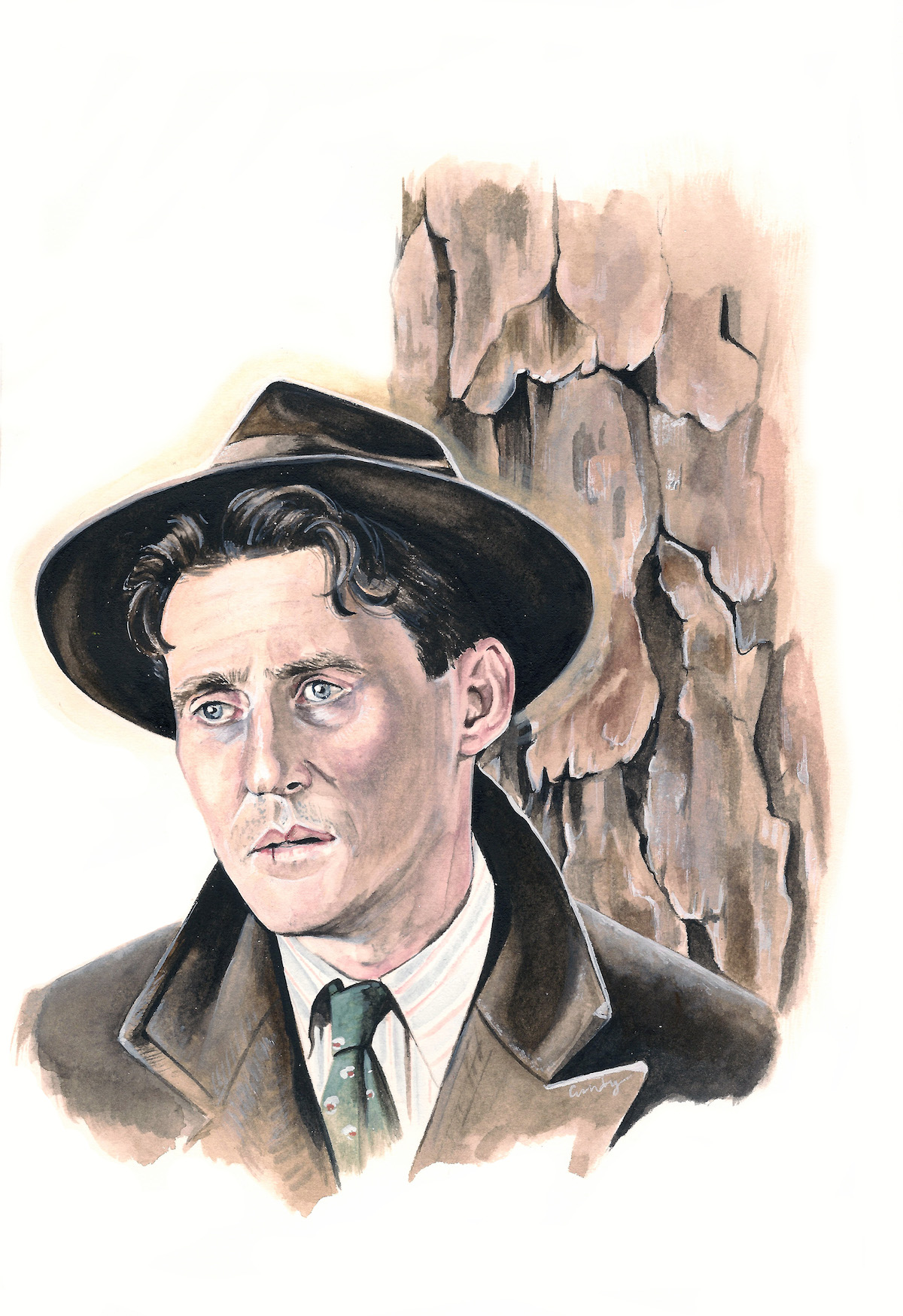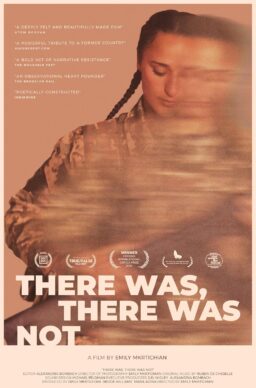The March issue of online magazine Bright Wall/Dark Room is focused on the Coen brothers. In addition to this excerpted essay by Karina Wolf about “Miller's Crossing,” there are additional pieces on “Blood Simple,” “Barton Fink,” “Fargo,” “The Big Lebowski,” “No Country for Old Men,” “True Grit,” “Inside Llewyn Davis,” and “Hail, Caesar!” The above illustration is by Brianna Ashby.
You can read previous excerpts from the magazine here. To subscribe to Bright Wall/Dark Room, or purchase a copy of their current issue, go here.
When, as a guest on “Inside The Actors Studio,” Gabriel Byrne was prompted for his favorite phrases, he chose prolix, an adjective connoting a superfluity of words, and bollocks, the Hibernian slang for testicles that can mean claptrap, rubbish, a series of lies, an idiotic person, or, in active form, the feat of fouling something up. The Coen brothers, Byrne’s writer-directors on “Miller’s Crossing,” could easily have chosen the same: above all in their work the sibling filmmakers elegize the cock-up and the grandiloquent.
After the success of “Raising Arizona,” the Coens were afforded the most lavish budget of their careers. They chose to make a Prohibition turf war inspired by Dashiell Hammett’s “The Glass Key,” in which lyrical gangsters raise hell. The setting is vaguely placeable: New Orleans stands for a northern underworld, not New York, maybe Chicago. The business—illegal liquor rackets, paid protection—is largely offscreen, but the characters are universally criminal. The Coens paint their 1920s mossy — a burnished, period-appropriate, artistically expressionistic hue of nostalgia. For “Miller’s Crossing” is a tribute film, a mafia movie made of noir’s most elegant frames: “Scarface,” “The Conformist,” “Le Samourai“, and “The Godfather”refashioned in the brothers’ comically bloody hand.
The Coens tend to begin a story with a crime—a robbery (“The Big Lebowski”), a counterfeit (“The Hudsucker Proxy”), a kidnap (“Raising Arizona”), a murder (“No Country For Old Men”). In “Miller’s Crossing,” a would-be offense is meant to correct an ongoing trespass. The low-level gangster Giovanni “Caspar” Gasparo petitions to put a hit on a bookie who’s cashing in on a fixed fight. You get that? The world works according to a logic as upside down and various as the men and women who live there. It is a sentimental and savage place—a big-hearted sap is a Tommy gun maestro; a slap tattoos affection and aggression; a shrug speaks volumes more than a speech.
The only sure thing is a thrown match—if you can’t count on that, Caspar reasons, the world descends into chaos. Determining a guilty party becomes a matter of deciphering the involved players’ “ethics.” A punitive hit is the remedy. Caspar wants to kill Bernie (John Turturro), the bookmaker who’s crossed him; but Bernie’s sister Verna (Marcia Gay Harden) steps out with capo dei capi Leo (Albert Finney) who is asked to approve the murder. Tom (Gabriel Byrne), the dry-eyed lieutenant, allows Leo to choose his own course. Prizing romance over business, Leo elects to protect Bernie and thereby escalates the violence between the Irish and Italian gangs.
Is Leo right-minded or biased, level-headed or overconfident? “I can still exchange body blows with anyone in this town. Except you, Tom,” Leo allows. Here Finney straddles the period between leading man—his early beauty and authority in “Tom Jones” and “Two For The Road”—and the potato-faced heavies he plays in the recent “Bourne” films. What’s constant is the diction, his beautifully old Hollywood accent, not English, not Irish, not American—a voice crafted for make believe. It adds a gentility to Leo’s big-hearted protection and to his pique when people mistake a smile for weakness. What is an old-fashioned mobster but an enfant terrible, like Max in “Where The Wilds Things Are,” whose desires are unchecked and limitations set by outside aggression? Leo is the perfect name for a gang boss who’s generous, vainglorious, sentimental but shrewd when he needs to be. And Finney plays him as an open-hearted Yank, bolstered by the security of having been in town the longest.
For among other things, “Miller’s Crossing” thinks about Americanness—how we fetishize origins because we are so distanced from them, how hierarchy has followed immigration patterns. There is nary a person of color in this gangland—the ethnicities we find are the subcultures of 1920s whiteness: gays, Jews, Italians and Irish, all in a lily-white tussle to the top. The Coen brothers embroider this paisley fabric of clannishness with peculiar values and peppery idioms. Rumpus, twist, flunky, daffy, dangle, stinko, rug, high hat—the pulpy words match the Coens’ aestheticizing task, but there is consequence to all the talk. The dramatic question is about ethnic and personal endurance; the methods of survival are literally cutthroat.
Like the Corleone’s Irish-American consigliere Tom Hagan, Tom Reagan is Leo’s right hand and most trusted friend. You can’t fault Leo for mistaking where he stands in his confidant’s estimation. He’s an Irish-American talking to an Irishman—they’re related but inequivalent conditions. It’s a matter of culture, in which men in general and Irish men in particular speak feelings in code, and of personal psychology. “A conversation between two Irishmen is one where neither party says what he means nor means what he says but each goes away knowing exactly what was discussed.” A Dubliner attributed this line to Brendan Behan. While I can’t confirm the source, the saying matches Tom’s methods of navigating American gangland—the trouble and advantage in being misunderstood. Brooding, moody, too smart to be happy, Tom is allergic to spelling things out. It’s a reflex and a survival instinct—this immigrant advisor who maintains a poker face while figuring all the underworld angles.
When Byrne first appeared as an actor, his looks might have propelled him toward the starrier parts Daniel Day-Lewis inhabited. But Byrne is not, after all, a hyper-emotional or physical actor like Day-Lewis. And since primary-colored conflicts are only a fraction of acting—a good deal more has to do with thinking and listening—Byrne’s talents found a niche. To paraphrase George Bernard Shaw, the Americans and the Irish are divided by a common language. And Byrne is best deployed when his characters act according to what we might call an Irish sensibility—not cynical but irreverent, driven by an awareness of the gap between what’s spoken, what’s meant and what’s done. Liam Neeson may carry the mantle of decency—it’s hard to imagine Byrne ever swinging a righteous fist—but Byrne has a corner on the well-aimed epithet and the well-wrought shaggy dog tale. He is a marvelous actor to play tolerant regard for universal hypocrisy.
The film’s ongoing gag is that Tom, who sees all outcomes of chancy human behavior, is an entrenched gambler on a dire losing streak. After a night losing at cards, he searches for the winners who made off with his hat. Reagan bangs on a door and finds Verna, sullen faced, pincurled, compellingly boss, nearly beautiful. When he asks about the fedora, she tells him to drop dead. He knocks again: I need a drink. Why didn’t you say so, Verna replies this time, allowing him through the door.
In the Coens’ films, there’s always a hidden password, because all societies are secret. The sibling pair (Joel and Ethan; Verna and Bernie) place their protagonist and their audience in the midst of this dilemma—parsing, interrogating, grifting, suffering an order that doesn’t remain constant. All of the Coens’ movies, it seems, work like an iteration of Kafka’s “Before the Law” parable. Here is a journey made only for the hero; the tortuous path is calibrated to the degree the protagonist can stand it. The Coens place themselves on various sides of “Miller’s Crossing’s” crimes: within the perspective of investigator, perpetrator, victim, witness, profiteer, judge and so on. This relentless shift of subjectivity proposes an overarching worldview—as if Joel and Ethan would say we all play a rotating role, dramatic or comedic, triumphant or victimized, according to merit, malice and chance.
The great mystery of the movie is the logic of Tom’s behavior. Do you always know why you do things, he wonders aloud. Addicted to risk, one supposes, he is drawn to the most dangerous woman he knows, Verna. He can’t carry out a gangland murder that will save his own skin. He vows he’s finished with Leo but still helps to win the gang war. And despite these compulsions, he refuses to prioritize any emotional link. In this fiction about paradoxical people, Tom Reagan is guru and touchstone.
Like Lebowski’s carpet, Tom’s hat accrues a tangle of meanings. Its possession means the ownership of the owner; its value is the promise of allegiance and agency. The hat doesn’t seem to stay attached to Tom’s head. From the opening coda of the film, it skitters and kites along a forest floor, is swapped according to his bad luck, is co-opted like his free will. This is life according to “Miller’s Crossing”: friendships are canceled and reinvented; allegiances sworn, reviled, reinstated; lives snuffed out and reborn. There’s no neutrality unless you eclipse yourself, by dying or faking your own death or by killing your enemies and making your allies indebted. Only then, like Tom, can you fix your hat atop your head and choose to walk away.











